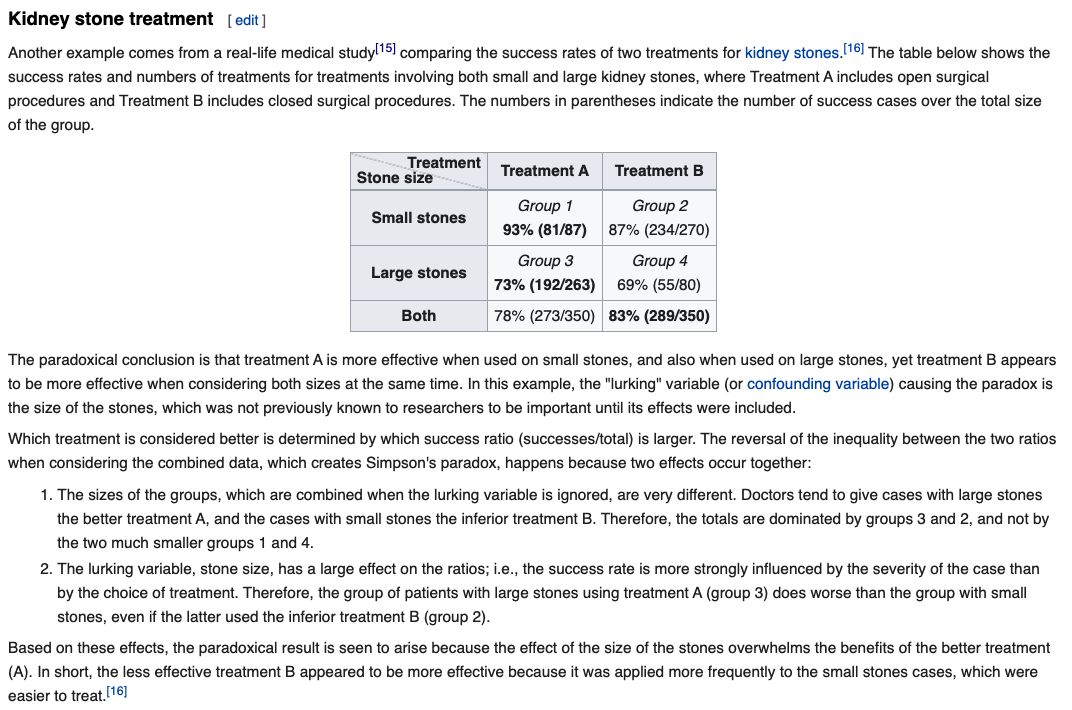11 Practical considerations
11.1 Practical versus statistical significance
You can have a statistically significant effect that is not practically significant. The hypothesis testing framework is most useful in the case when the signal-to-noise ratio is relatively small. Otherwise, constructing a confidence interval for the effect size is a more meaningful approach.
11.2 Correlation versus causation, and Simpson’s paradox
Causation can be elusive for several reasons. One is reverse causation, where it is not clear whether \(X\) causes \(Y\) or \(Y\) causes \(X\). Another is confounding, where there is a third variable \(Z\) that causes both \(X\) and \(Y\). For the latter reason, linear regression coefficients can be sensitive to the choice of other predictors to include and can be misleading if you omit important variables from the regression. A special and sometimes overlooked case of this is Simpson’s paradox, where an important discrete variable is omitted. Consider the example in Figure 11.1. Sometimes this discrete variable may seem benign, such as the year in which the data was collected. Such variables might or might not be measured.

11.4 Model selection
We need to ask ourselves: Why do we want to do model selection? It can either be for prediction purposes or for inferential purposes. If it is for prediction purposes, then we can apply cross-validation to select a model and we don’t need to think very hard about statistical significance. If it is for inference, then we need to be more careful. There are various classical model selection criteria (e.g., AIC, BIC), but it is not entirely clear what statistical guarantee we are getting for the resulting models. A simpler approach is to apply a \(t\)-test for each variable in the model, apply a multiple testing correction to the resulting \(p\)-values, and report the set of significant variables and the associated guarantee. Re-fitting the linear regression after model selection leads us into some dicey inferential territory due to selection bias. This is the subject of ongoing research, and the jury is still out on the best way of doing this.